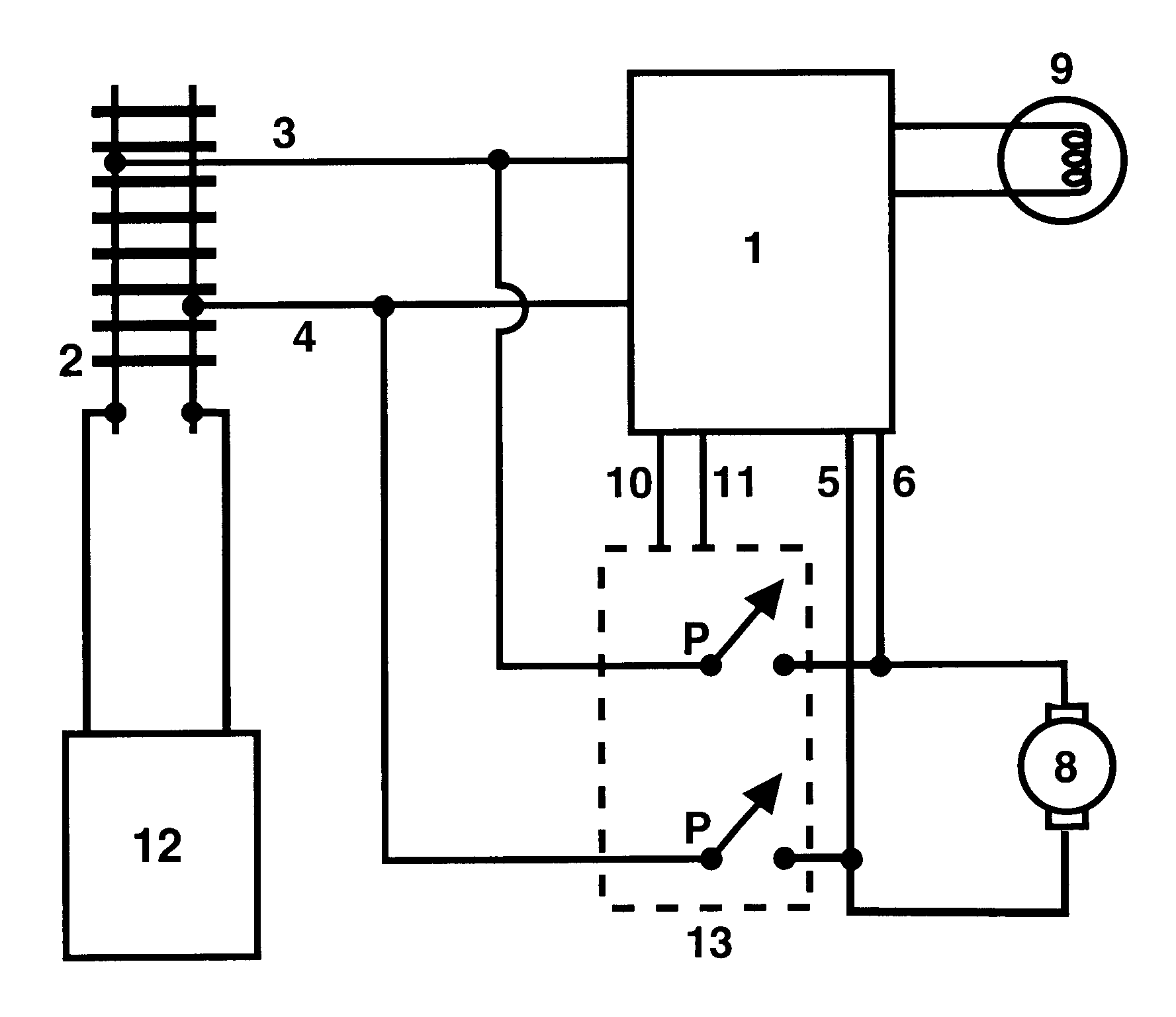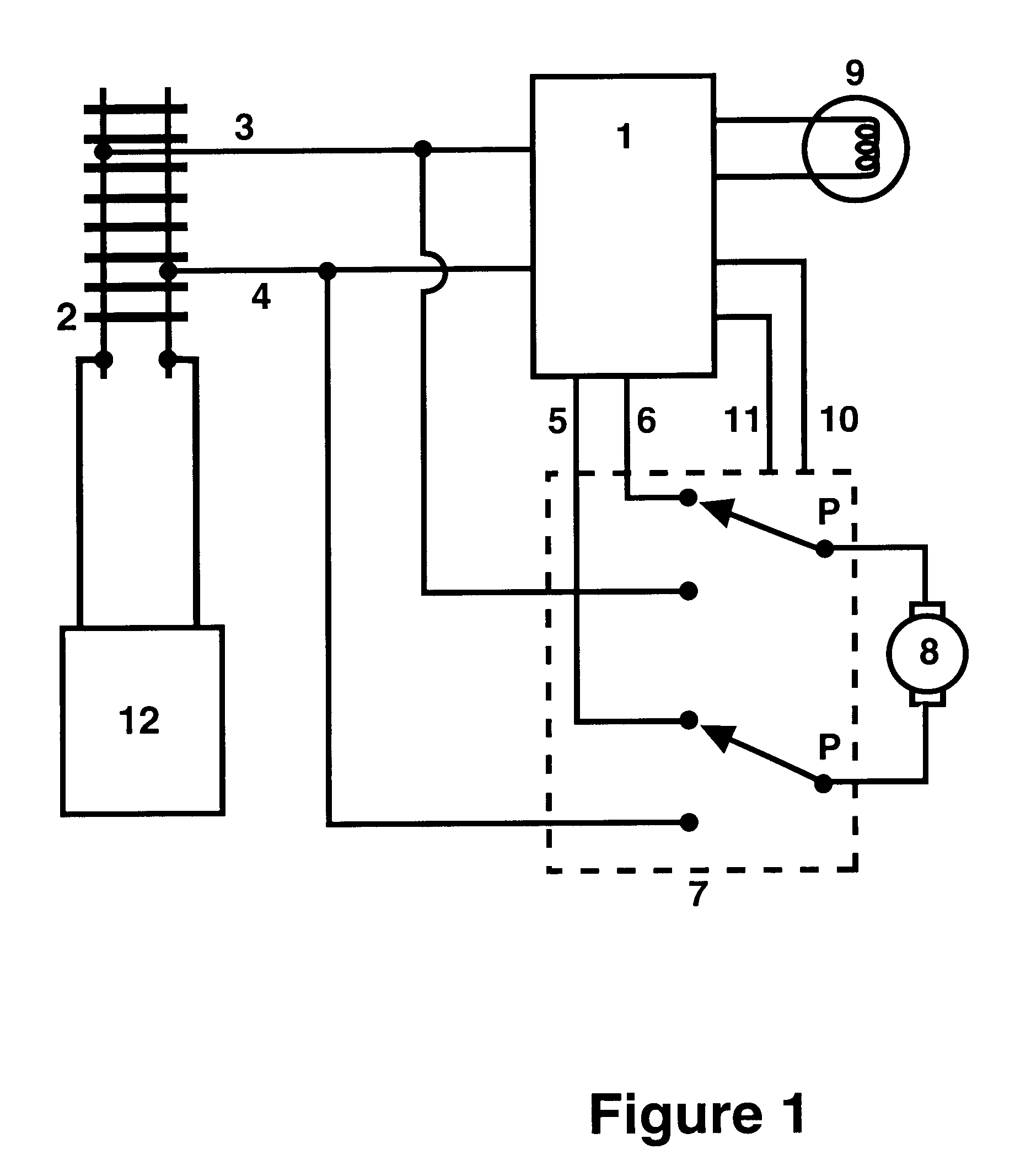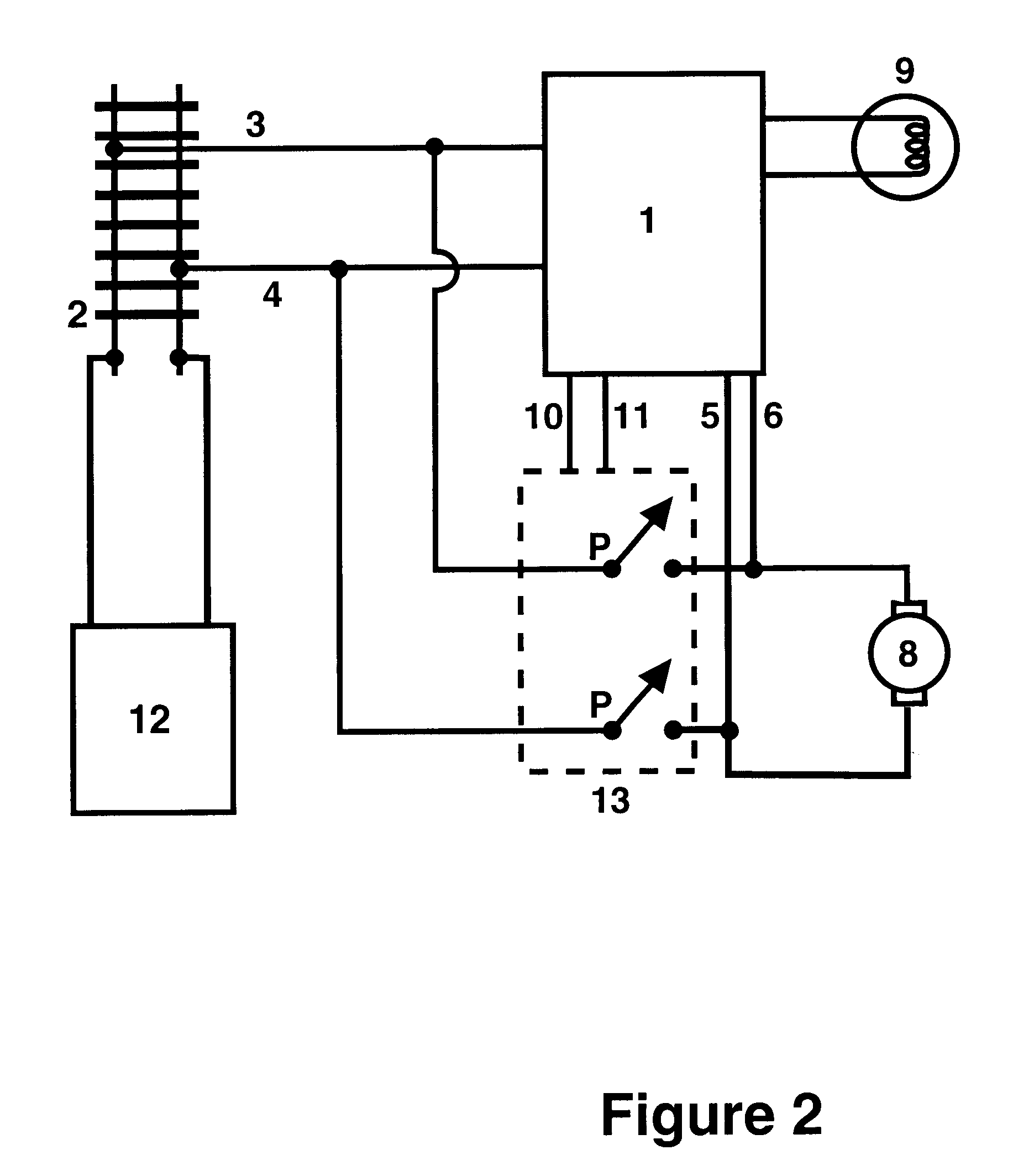Mode-conversion method for model railroad decoders
a technology of mode conversion and model railroad, applied in the direction of dynamo-electric converter control, multiple dynamo-motor starters, instruments, etc., to achieve the effect of not causing damag
- Summary
- Abstract
- Description
- Claims
- Application Information
AI Technical Summary
Benefits of technology
Problems solved by technology
Method used
Image
Examples
Embodiment Construction
FIG. 1 depicts many key elements of the general electrical connection arrangement of the prior art of RP-9.1.1 and also represents some of the configuration described by Graf.
FIG. 2 shows these same elements in the novel configuration employed in the preferred embodiment of this invention.
Item 1 represents the decoder, receiver or electronic control unit that may be used to control the motor, 8, when any track energy supply, 12, connected to the model railroad tracks, 2, provides a compatible and understood control format. The track energy and embedded control information, from 12 via track 2, is conducted by track pickup leads 3 and 4 and conducted to the decoder, 1, and also to a motor current switching arrangement, 7. The track pickup leads 3 and 4, may be via locomotive wheels, track slider shoes, pickup brushes, overhead pantograph pickups or any other conductive method or combination, and may even be via a wired-tether connection.
The motor current switching arrangement, 7, is ...
PUM
 Login to View More
Login to View More Abstract
Description
Claims
Application Information
 Login to View More
Login to View More - R&D
- Intellectual Property
- Life Sciences
- Materials
- Tech Scout
- Unparalleled Data Quality
- Higher Quality Content
- 60% Fewer Hallucinations
Browse by: Latest US Patents, China's latest patents, Technical Efficacy Thesaurus, Application Domain, Technology Topic, Popular Technical Reports.
© 2025 PatSnap. All rights reserved.Legal|Privacy policy|Modern Slavery Act Transparency Statement|Sitemap|About US| Contact US: help@patsnap.com



